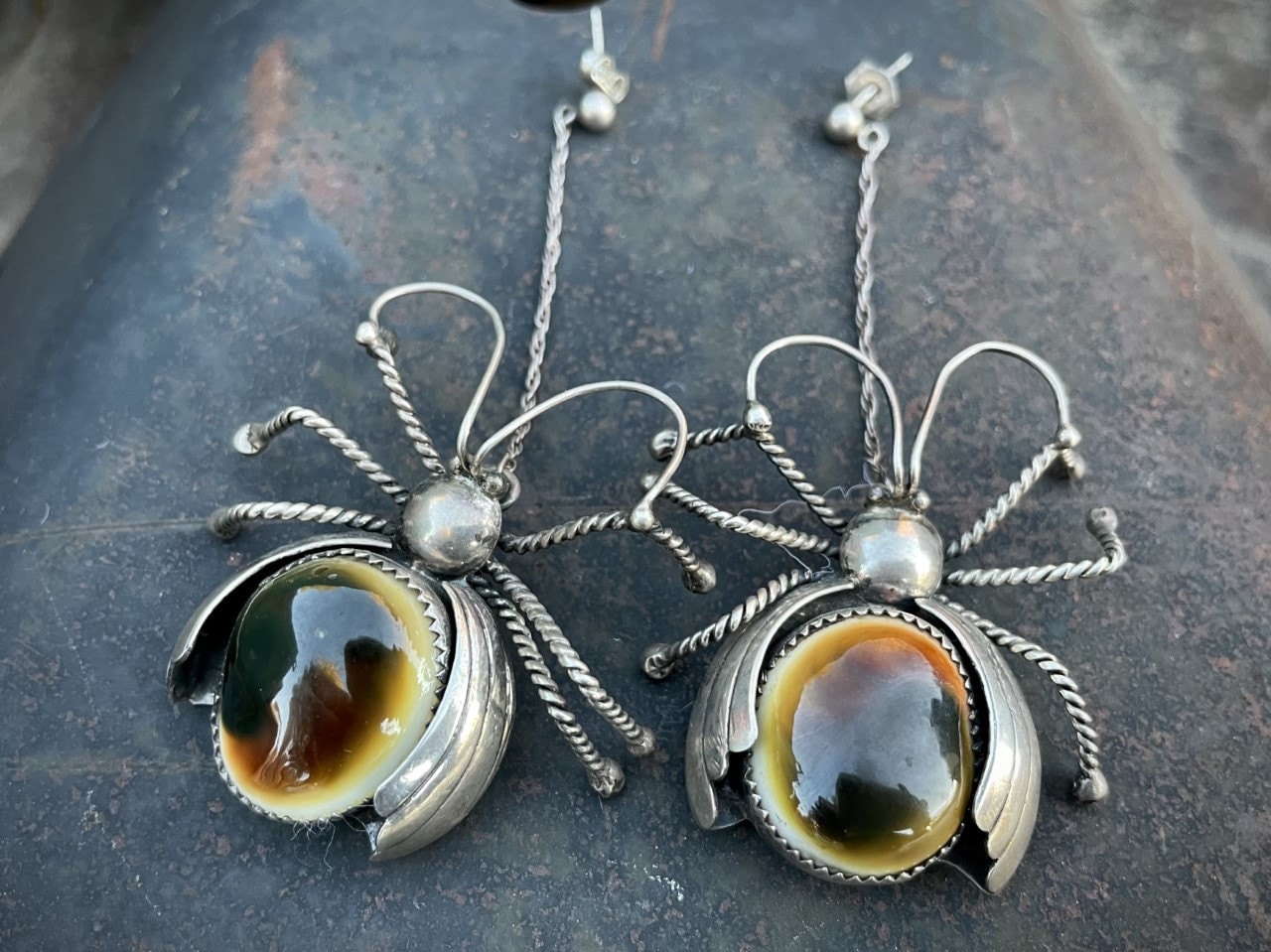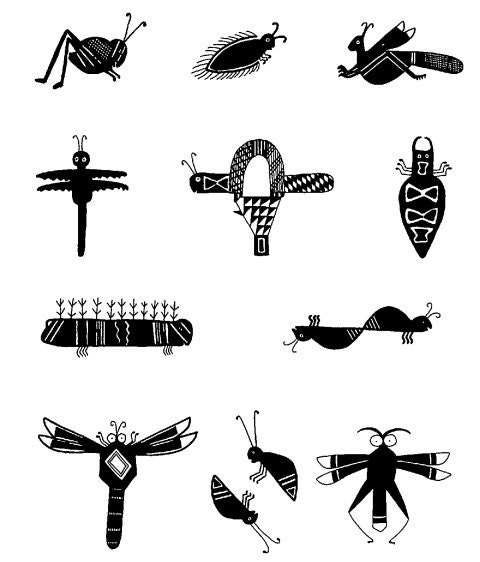I've always loved insects. If I saw a centipede or--gasp!--a Child of the Earth, I was the kid squatting as close as I could to examine their many legs, big eyes, and mandibles. The more legs the better.
When friends tell me they kill spiders, I feel bad. One friend mentioned that she sprayed poison on a giant web near her rose bush, which held the most humungous spider she had ever seen--yellow and black striped, nearly as big as the palm of her hand. "Oh no!!!" I told her, "That was an orb weaver! It's not poisonous at all! They're beneficial!"
Not only do I find the orb weaver and her web to be beautiful--magical in the morning with drops of dew--I also embrace the idea of the spider as a symbol of creativity. Just look at how easily she is able to weave a magnificent web.

Insect imagery has been found on indigenous art since ancient times. Even insects that destroy crops showed up on Mimbres pottery--grasshoppers, antlion larvae, and caterpillars. From a research article in the American Entomologist, "The naturalistic designs found on Mimbres pottery suggest close and unusual association with nature. Insects appear more frequently than in art of European cultures. Except for occasional butterflies and other insects with ornamental value, we rarely find insects associated with serious European art, and almost never as the primary subject. It is surprising that other natural phenomena such as plants, sun, stars, and moon were rarely pictured by Mimbres artists."
Hopi artists often depicted insects in Kachina form, those beneficent spirit-beings who accompanied people from the underworld, the origin of all peoples. Again, from the same research article: "Several insect kachinas are known, including bee, wasp, cicada, butterfly, robber fly, cricket, and dragonfly. Spiderwoman, one of the most frequent characters in Hopi mythology, also is represented by a kachina figure. Kachina figures have specific roles, and many occur only in certain ceremonies. Cicada kachina, for example, appears early in the year, presumably as a prayer for the arrival of summer when the real cicada occurs."
Insects are also important to Navajo mythology, and are often depicted in dry paintings (which we call "sand paintings"). Some of the insects in Navajo art include the "big fly," who is an instructor-helper, mediating between humans and dieties; dragonflies, which represent water; cornbug, which symbolizes reproduction; and many others.
I come across vintage Native American jewelry with insect imagery, but not so much new jewelry. The research article talked about how early artisans produced what was important to their own cultures, but that over time, those designs have become less and less marketable. Again, quoting from the article: "However, tourists of European heritage seem reluctant to purchase items decorated with insect characters, other than 'pretty' butterflies. We cannot expect native artists to produce items that they cannot market. Sadly, an intriguing cultural heritage is being distorted by insect phobias."
I hope there are plenty of folks out there who appreciate insect jewelry in spite of a general lack of demand for spiders and beetles and dragonflies. Because this is one of my favorite themes in jewelry, and any time I find an insect--the more legs, wings, bulging eyes, the better--I am going to buy it and bring it to all of you.
Read the research article at this link: Insects in Art and Religion: The American Southwest, by J. L. Capinera, American Entomologist, Winter 1993.

